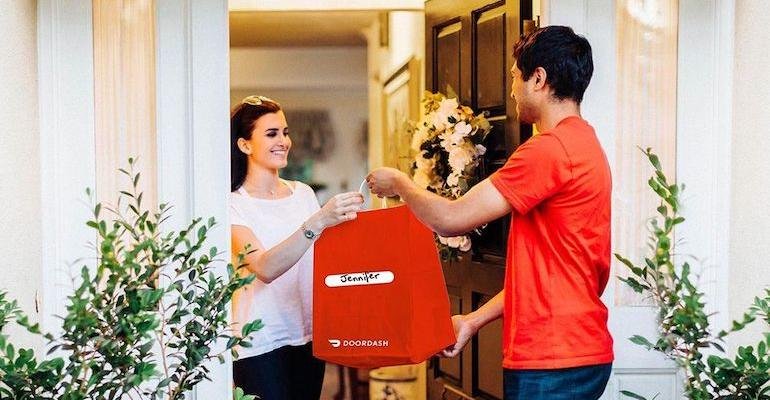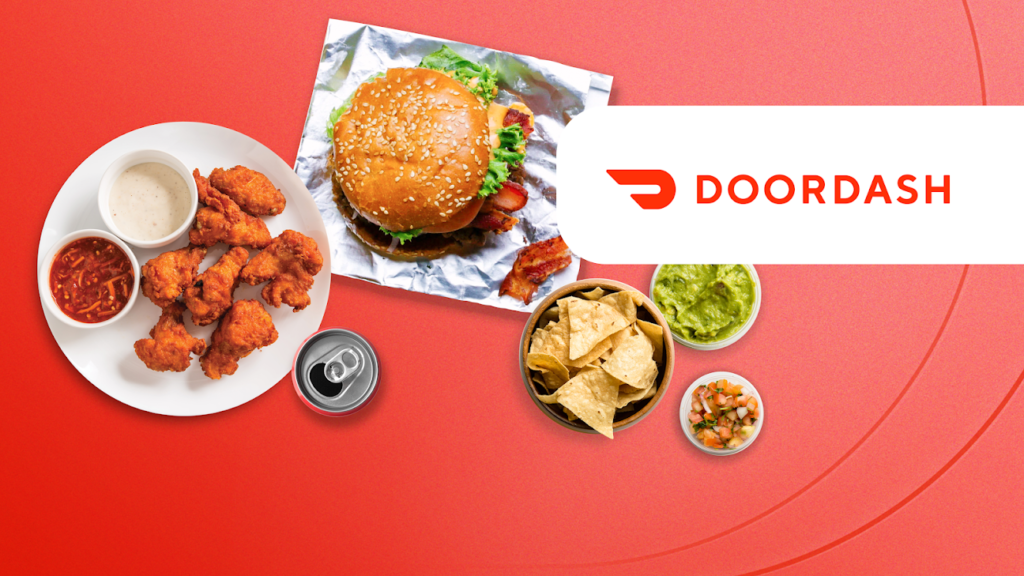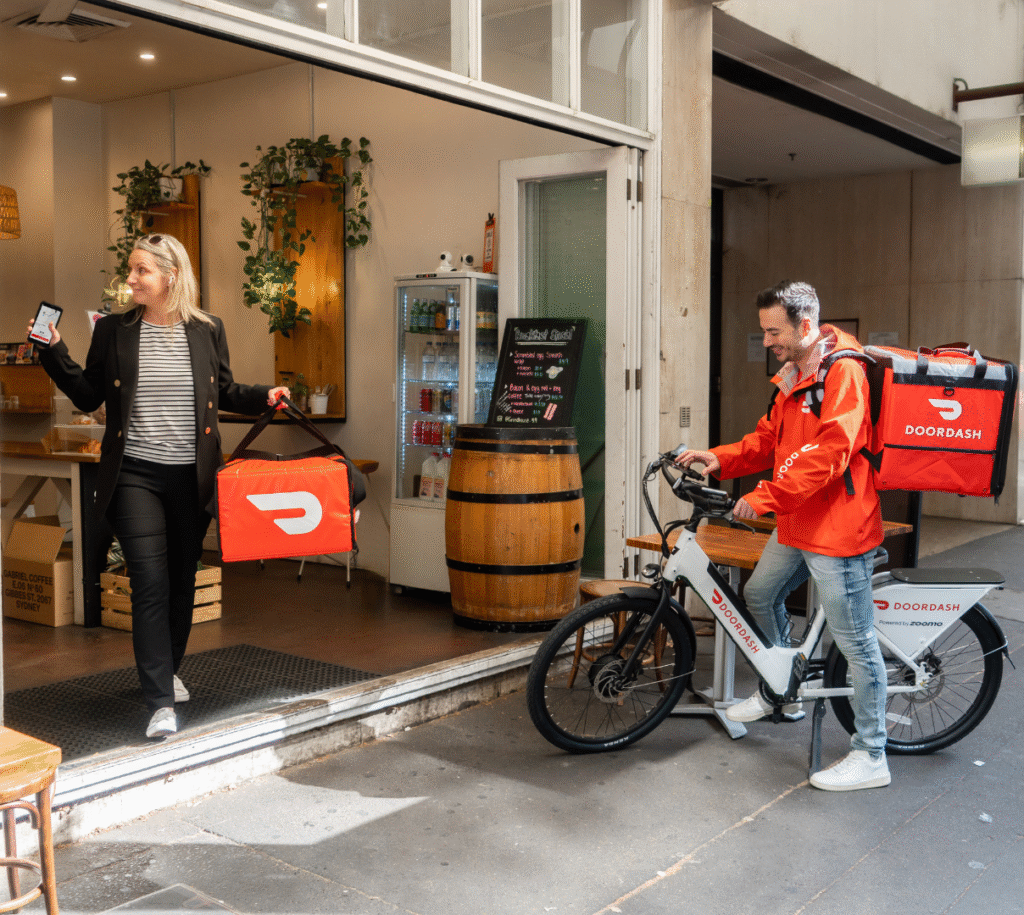In today’s fast-paced world, convenience is everything—and few companies understand this better than DoorDash. As one of the leading on-demand food delivery platforms in North America, DoorDash has redefined how people access food, groceries, and even retail goods. Since its founding in 2013, the company has transformed from a simple food delivery app into a powerful force in the logistics and last-mile delivery space.
DoorDash began as a solution to a common problem: how can local businesses deliver to customers who are just a few miles away but lack the resources for delivery? This question sparked the idea that eventually became DoorDash. Founded by Tony Xu, Stanley Tang, Andy Fang, and Evan Moore while they were students at Stanford University, DoorDash initially launched as PaloAltoDelivery.com.
From the beginning, the company’s mission was clear—to “grow and empower local economies.” This mission is not just a tagline; it guides every product innovation, partnership, and decision made at DoorDash. By enabling local merchants to reach more customers and by providing gig economy workers (known as Dashers) with flexible income opportunities, DoorDash positioned itself as more than just a delivery service—it became an economic engine for communities.


At its core, DoorDash operates a three-sided marketplace: consumers, merchants, and Dashers. Customers use the app or website to place orders from local restaurants, convenience stores, and grocery chains. Merchants receive those orders through their own DoorDash dashboard or third-party point-of-sale integrations. Dashers, independent contractors using their own vehicles, accept delivery opportunities and fulfill the orders.
DoorDash earns revenue through delivery fees, service charges, subscription plans (DashPass), and commission fees charged to partner merchants. This diversified revenue stream has helped the company remain competitive even in a crowded market.
In just over a decade, DoorDash has gone from operating in a handful of cities to serving over 7,000 cities across the United States, Canada, Australia, Japan, and Germany. This impressive growth did not happen overnight. Strategic partnerships with national brands like McDonald’s, Walmart, and CVS, as well as acquisitions of other companies such as Caviar and Wolt, have helped DoorDash scale rapidly.
Moreover, DoorDash has evolved beyond food. Today, customers can order convenience store items, groceries, pet supplies, alcohol, and even flowers—expanding the company’s reach into multiple verticals of last-mile logistics.

One of DoorDash’s most successful innovations is DashPass, a subscription service that offers customers unlimited deliveries with reduced fees for a monthly charge. DashPass not only improves customer retention but also increases average order frequency. This subscription model represents DoorDash’s effort to build long-term customer loyalty in a highly competitive market.
By offering benefits like priority customer support, exclusive deals, and zero delivery fees from thousands of eligible restaurants, DashPass has attracted millions of subscribers. As a result, it has become a key pillar of the company’s growth strategy.
While DoorDash has teamed up with major franchises, it has also remained focused on helping small and mid-sized businesses thrive. The DoorDash for Merchants platform provides tools for order management, marketing, data analytics, and delivery logistics. Merchants can also use the Drive program to power their own delivery channels using DoorDash’s logistics network.
This B2B service model helps businesses increase efficiency, reach a wider audience, and compete with larger chains. In fact, many independent restaurants have credited DoorDash with helping them stay afloat during the COVID-19 pandemic, when dine-in traffic dropped dramatically.
DoorDash’s gig economy model empowers over two million Dashers worldwide to earn money on their own schedules. Whether someone is looking for a side hustle, part-time gig, or full-time opportunity, DoorDash offers flexibility and accessibility.
However, the company has faced criticism and regulatory scrutiny over how it classifies and compensates Dashers. In response, DoorDash has introduced several initiatives, including DasherDirect (a prepaid business card with no-fee payouts), tip transparency, and educational resources. Additionally, they launched the Prop 22 campaign in California, allowing Dashers to maintain contractor status while receiving healthcare stipends and other benefits.

DoorDash is, at its core, a tech-driven company. Its proprietary logistics software matches deliveries to Dashers based on distance, traffic patterns, and real-time supply-demand factors. The platform also uses AI and machine learning to optimize route efficiency, customer satisfaction, and restaurant operations.
Moreover, DoorDash is investing in futuristic delivery solutions like robotics, drones, and autonomous vehicles. In 2021, it launched pilot programs with companies like Starship Technologies and Cruise to test autonomous food delivery in select markets.
DoorDash is also striving to make a positive impact beyond the bottom line. Its Project DASH initiative helps nonprofit organizations deliver meals and essential items to those in need. So far, Project DASH has facilitated millions of deliveries for food banks and social service agencies.
On the environmental front, DoorDash is exploring ways to reduce its carbon footprint. From eco-friendly packaging partnerships to pilot programs for electric bikes and scooters, the company is working toward a more sustainable future.
In December 2020, DoorDash went public on the New York Stock Exchange under the ticker symbol DASH. Its IPO was one of the most highly anticipated tech debuts of the year, raising nearly $3.4 billion and giving the company a valuation of over $70 billion at the time.
Since then, DoorDash has continued to grow, navigating economic headwinds, evolving consumer behavior, and increased competition from rivals like Uber Eats, Grubhub, and Instacart. Despite these challenges, DoorDash remains the market leader in U.S. food delivery, with over 65% market share as of early 2025.
As the world becomes increasingly digital and convenience-driven, DoorDash shows no signs of slowing down. The company is actively expanding into international markets and experimenting with next-generation delivery technologies.
Its long-term vision includes becoming the universal last-mile delivery platform—not just for food, but for everything. With its robust infrastructure, strong brand equity, and relentless focus on innovation, DoorDash is well-positioned to lead the future of on-demand logistics.

SEE MORE COMPANIES JOB CAREER SEE FIND THE BEST GIFT CARD OFFER
Jobs posted by DoorDash
No available jobs.